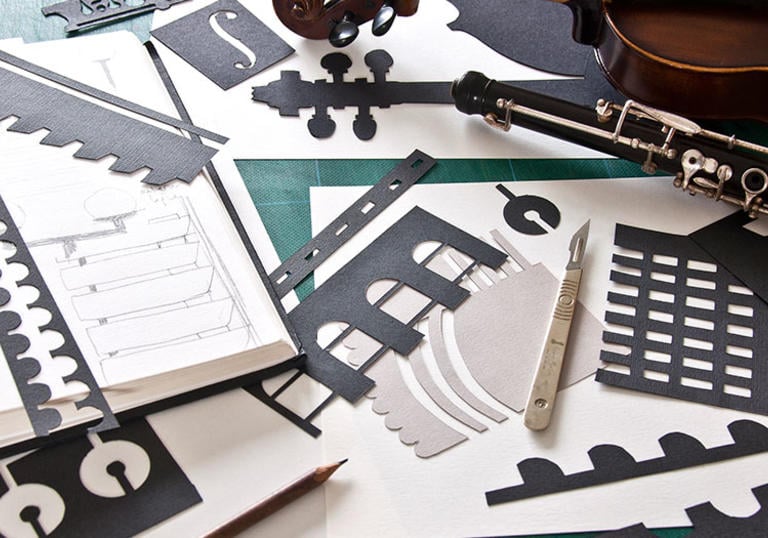After a two-year National Diploma in Surface Pattern in Norfolk I chose to study Printed Textile Design on the degree course at Leeds College of Art and Design back in the mid-nineties. After my degree I went to Camberwell College of Arts to study an MA in Book Art, I’ve felt somehow caught between fine art and design with my practice. Book Art for me is an exciting world of narrative, book structures, visual communication and printmaking, and without it I wouldn’t be doing what I do now.
I’ve always combined my design career with a parallel career as an academic as I really enjoy the process of learning and teaching too. I taught at Central Saint Martins for several years, and I’m currently Course Director of the degree in Textile Design at Birmingham City University so I’m always busy!
I’m always working across several sketchbooks at once, keeping my eyes open for ideas. Landscape and mapping are recurring themes and feed my design work. When I start on a new commission I throw myself in to drawing, cutting, collaging or printing to find the right language. I don’t wait for something to come to me, I’m busy working and soon I get an idea of where I’m going with it. Once I know where the image-making is going I’ll often scan original artwork in to the computer and work either in Photoshop or Illustrator to test rhythms and compositions, depending on repeat pattern requirements or placement images. Then it’s back to the drawing desk to resolve final shapes and proportions before finalising everything as digital files.
I think I have quite a varied style across my projects but others think my work is distinctive, often in its simplicity and geometric structure. The Barbican commission has let me explore this idea further, blending architectural detail with the language of music to tell a story, relating to the activities of the centre.
I love paper and textiles – they both have different needs when it comes to printing patterns. I enjoy the pattern design process whether it’s with a pencil or paper and scissors. I love the hands-on process of printing too, so I create limited editions of prints as part of my creative journey, as well as hand screen printed notebooks and cushions.
Today’s designers have to be constantly learning in order to keep up, but it’s also important for me that I remember my traditional skills. I still plan repeats by hand, on sheets of paper, and I still create original artwork by hand. More often than not though, even if I’m going to hand screen print something, the artwork will be handled digitally to get to that point. In today’s design world with digital print production we can print on almost anything as well as textiles but it’s important to me that I work closely with those printing for me as I have high standards and the materials I place my patterns on require consideration. Digital production allows bespoke production, and that’s exciting!
Of course the balconies of the towers are dominating, but I also liked the rhythms of strong shapes such as windows, the lakeside terrace and details such as the lights. I was drawn to the repetitive rhythms that can be equated with musical beats. I explored various pattern compositions, but once I’d made the link between the journey across the Barbican estate, with that of a sheet of music it felt more resolved and appropriate. The shapes of the instruments explore scale and detail in the same way the buildings do. The strings become walk-ways, the oboe keys are jetties on the water.
I would advise people to work away from the computer and develop a confidence in image making firstly. It’s easy to rush to make a repeat pattern in Photoshop, but it’s like cooking, if you haven’t got beautiful ingredients it won’t be as good as it could be. Patterns take a long time to get right if you want decent patterns.

